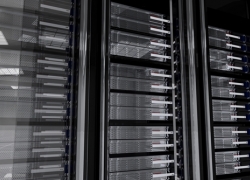Optimize efficiency and equipment reliability with environmental monitoring
Optimize efficiency and equipment reliability with environmental monitoring

Within the data center environment, it remains a top priority to make sure every system is functioning at optimum capacity and that there are no outstanding issues that could impede the efficiency of the data center. With the price of system failure increasing on a daily basis, infrastructure providers can't afford for their data centers to go offline. Even decreases in efficiency, while not as dire as direct outages, can mean lost revenue if not detected in a timely manner.
Potential environmental concerns
Temperature can be a serious issue for data centers. The American Society of Heating, Refrigerating and Air Conditioning Experts dictates guidelines for the maximum and minimum temperature levels that server rooms should maintain. In an interview with TechTarget, data center expert Bill Kleyman indicated that in 2011, ASHRAE increased the temperature range to between 41 degrees Fahrenheit and 113 degrees F.
If units become overheated, it can cause fire and other concerns that ultimately impact the efficiency of the entire facility. The negative aspect of data center fire is obvious: blazes within the server room cause expensive outages and can directly impact the bottom line of infrastructure providers. An example would be the recent fire that U.K. communications company BT experienced; the fire was small, but the company suffered outages due to fire teams shutting down power to the entire facility to deal with the blaze. According to Data Center Knowledge, even though power was restored to the facility around 8 hours after the fire was initially reported, one client didn't have systems fully back online until 24 hours after the incident.
Humidity offers a similar challenge. When the data center environment is too humid, condensation can form on critical electrical equipment, and environments that are too dry can cause static that leads to sparking and short circuits. According to Data Center Journal, humidity is a noteworthy environmental concern within the data center, and managers should take steps to ensure it remains at constant levels. Relative humidity, which has been touted as the ideal metric, should fall between 45 percent to 55 percent, but the guidelines released by ASHRAE show that these recommended ranges are continually in flux.
Recently, absolute humidity has become an important metric for measuring humidity within the data center; this is calculated by taking the ratio of grams of water per grams of dry air. ASHRAE recommends the absolute humidity have a maximum of 0.011 and a minimum of 0.006.
How can you ensure data center health?
This is where server room monitoring comes in. Making sure the temperature and humidity stay within accepted ranges helps increase the efficiency of individual servers and the facility as a whole. A data center is only as good as the equipment it uses, and being able to detect changes in the environment is key to ensuring the facility continues to function at the optimum level. In fact, data centers can often reduce the amount of energy they use by changing the thermostat, so incorporating sensors and temperature monitors to the system can create actionable data for managers to use.
Data center managers can rest easier when their equipment is being monitored for fluctuations in temperature and humidity. When a trending analysis is available for the data center environment, managers can view their entire system as a whole and detect those changes before they become issues down the road. Successful data room monitoring can include a data center infrastructure management solution like the one offered by Geist. DCIM helps incorporate all facility systems into one by allowing managers to view and act on data gathered and analyzed by the DCIM software.



